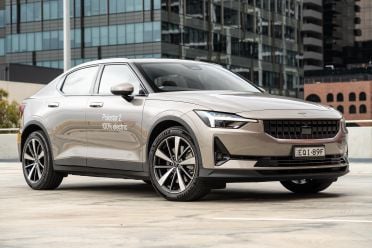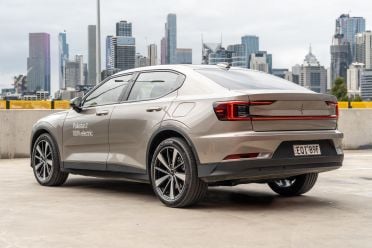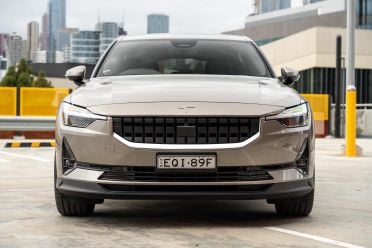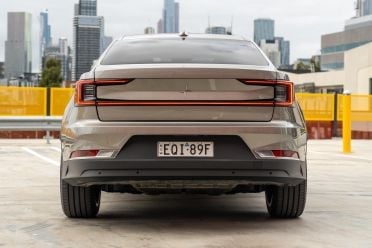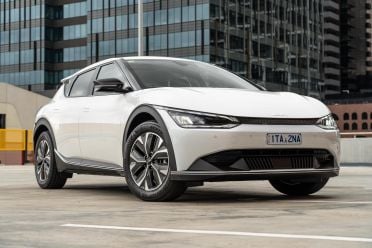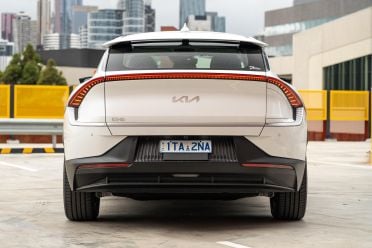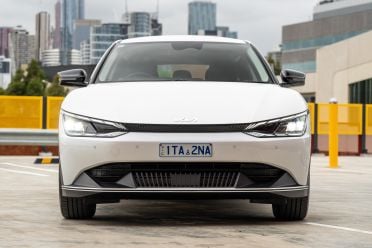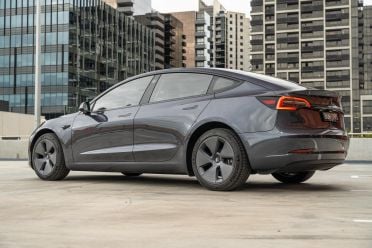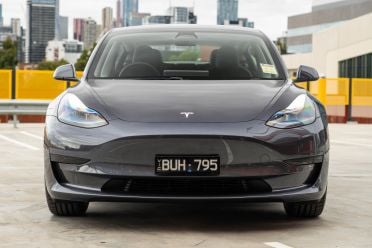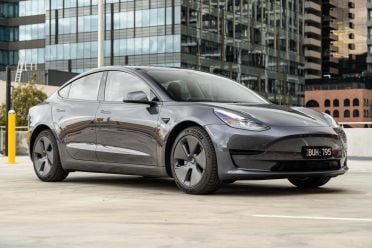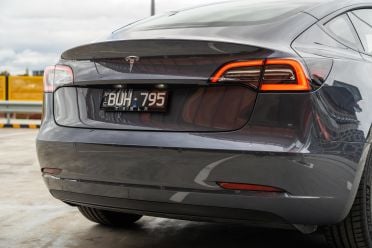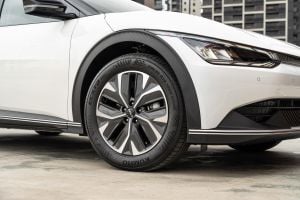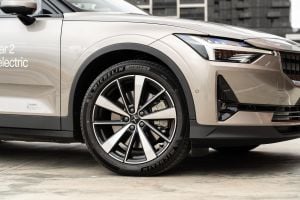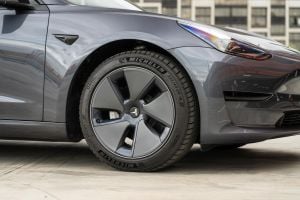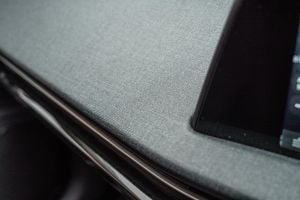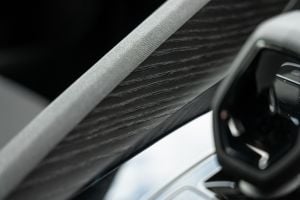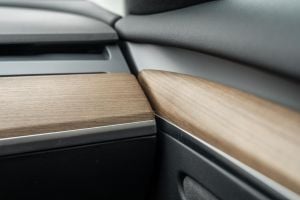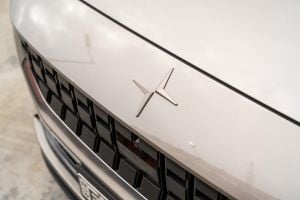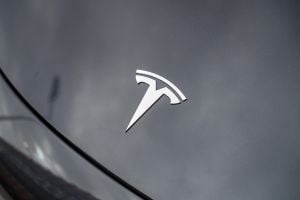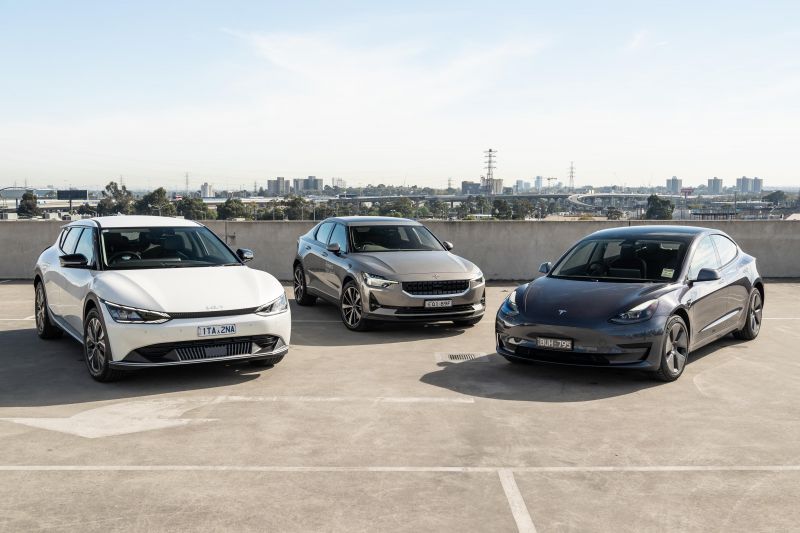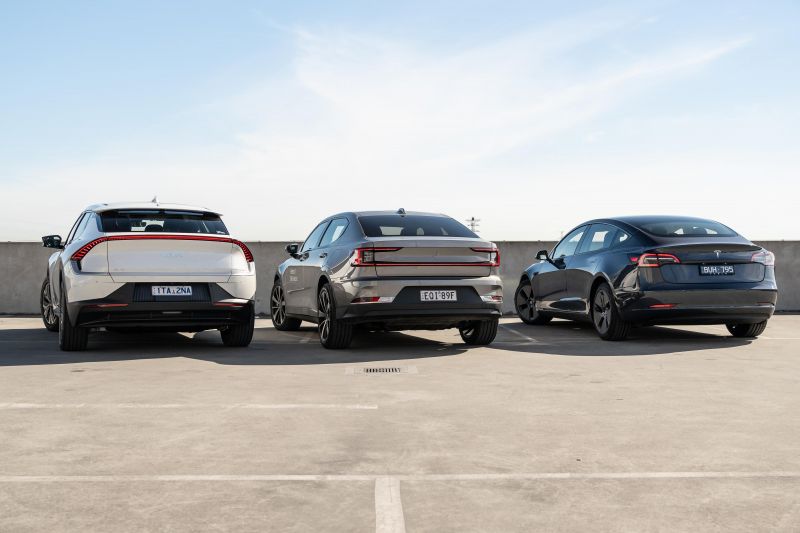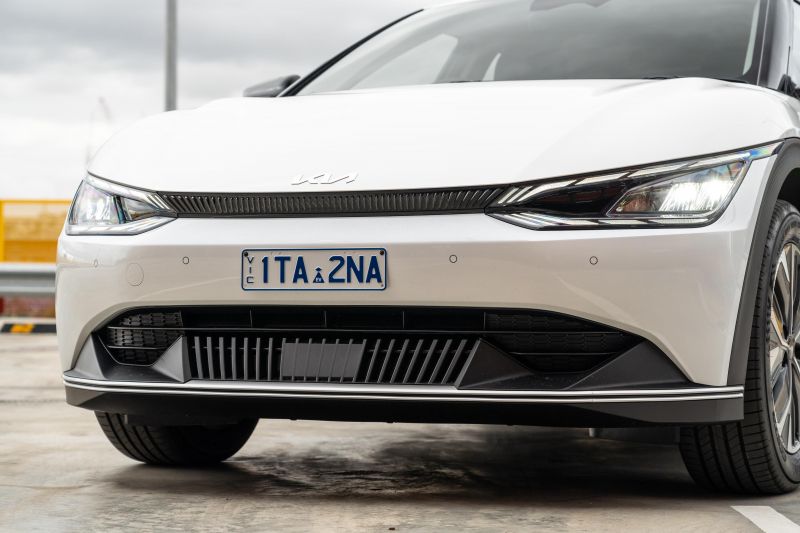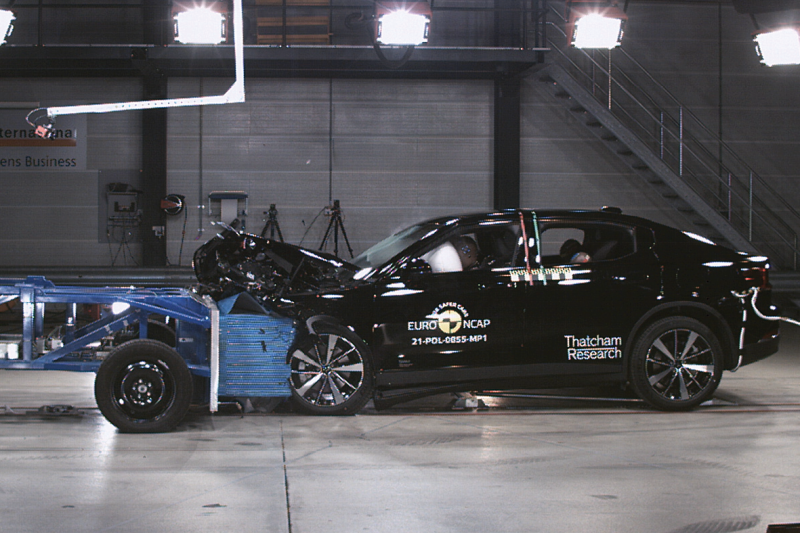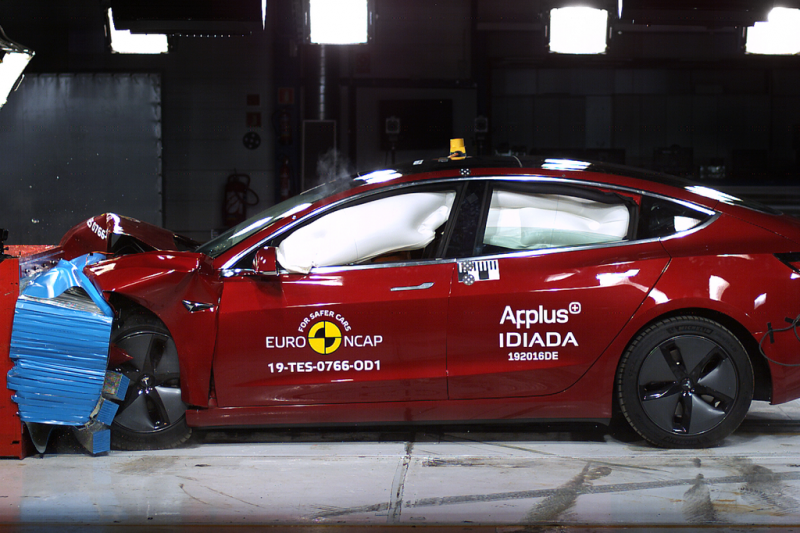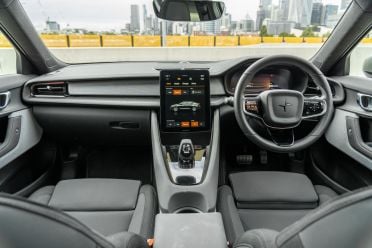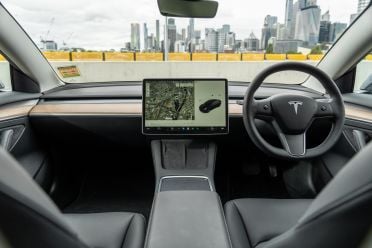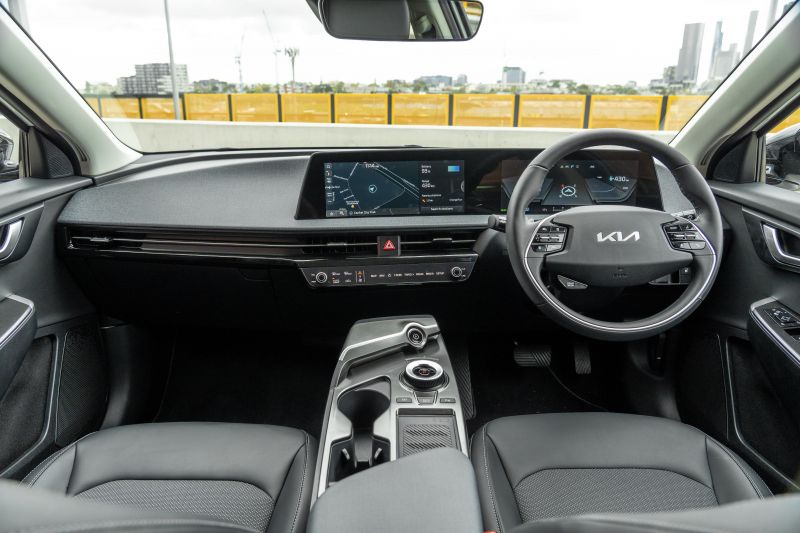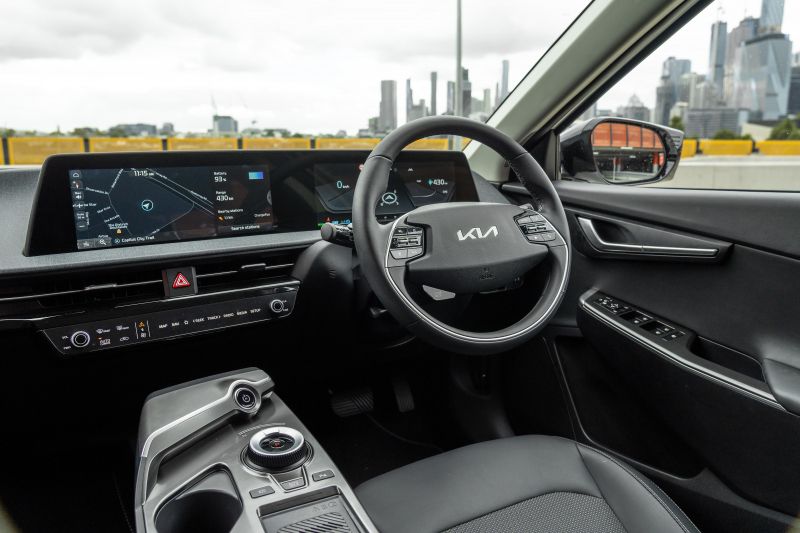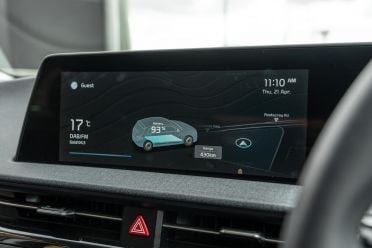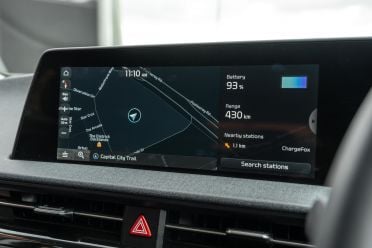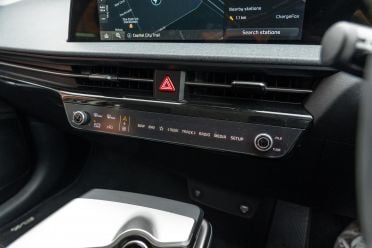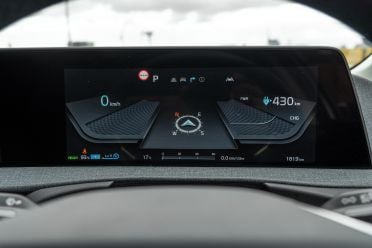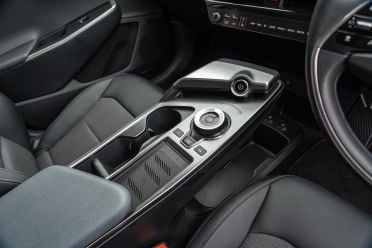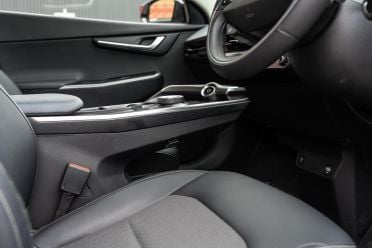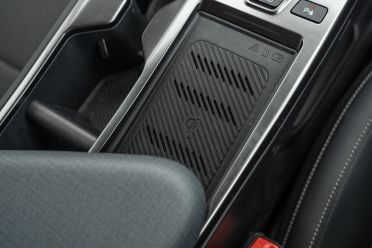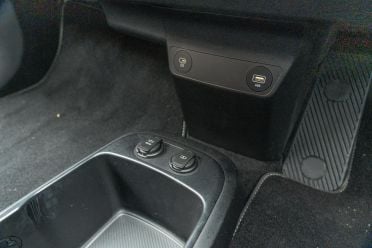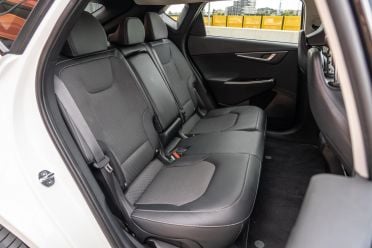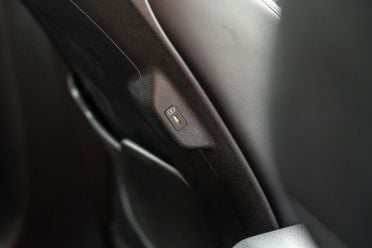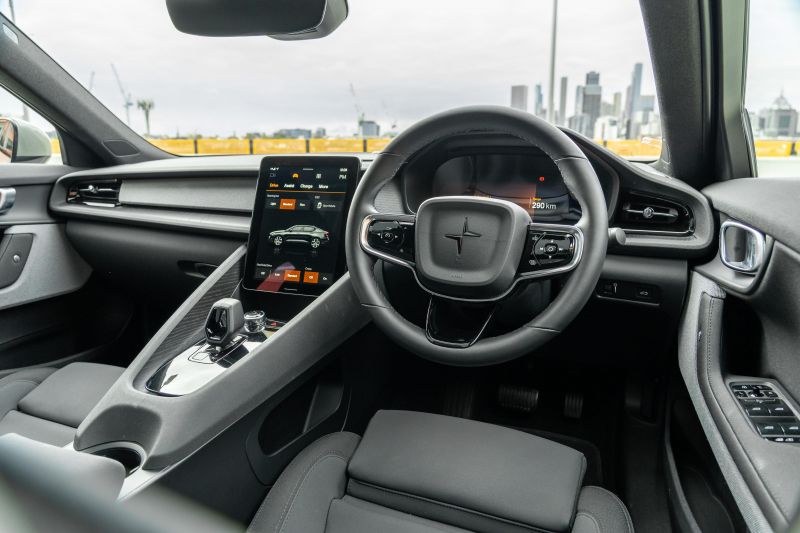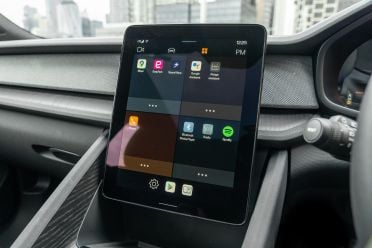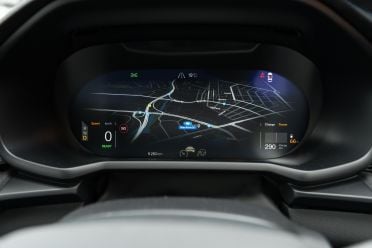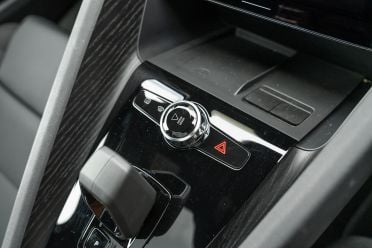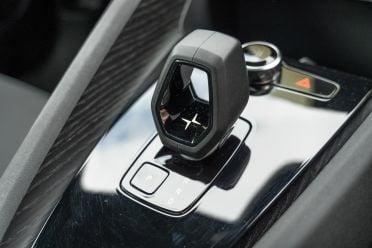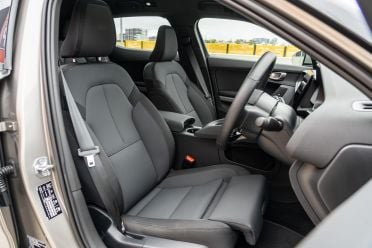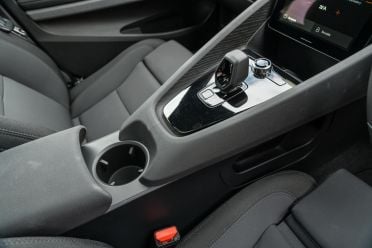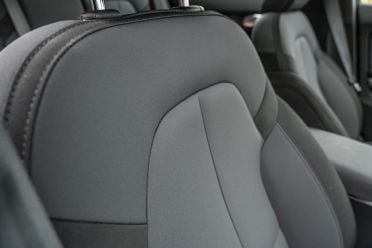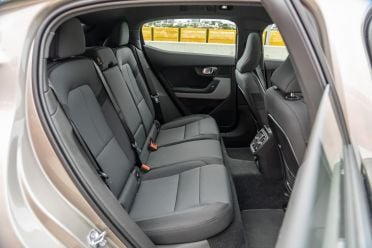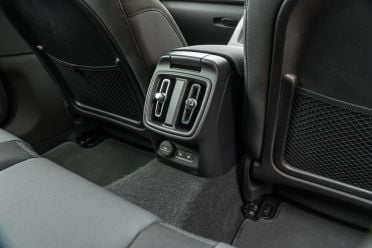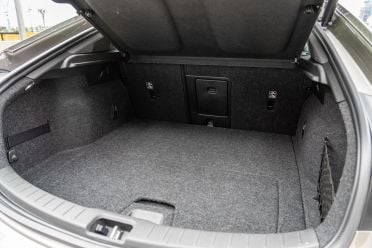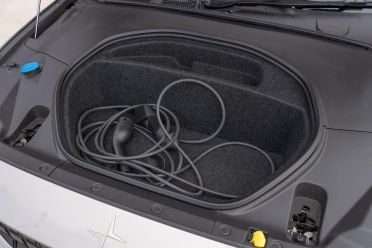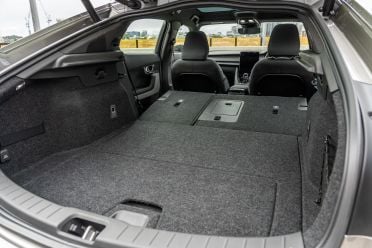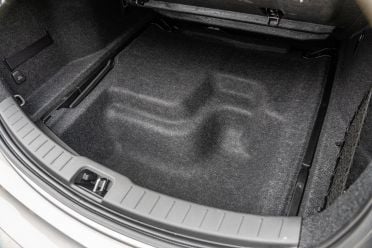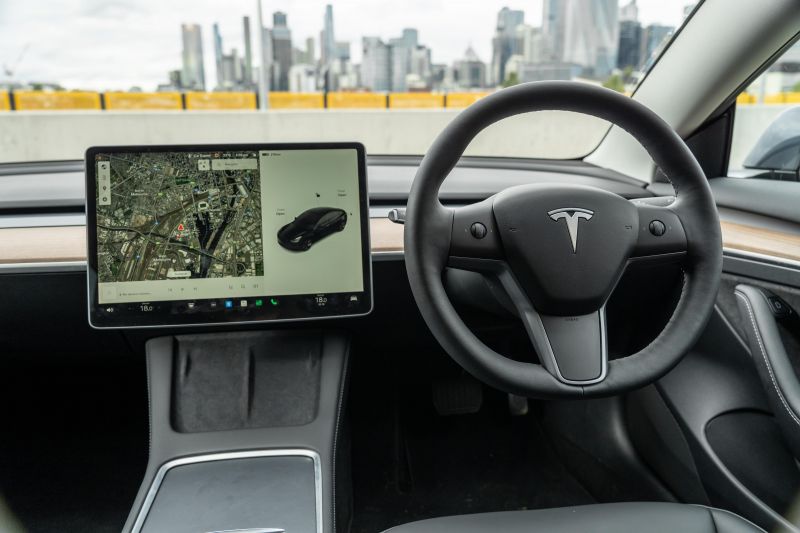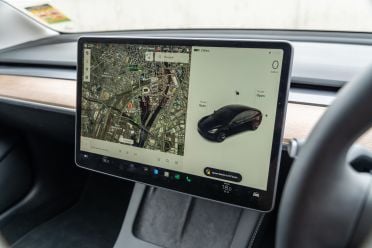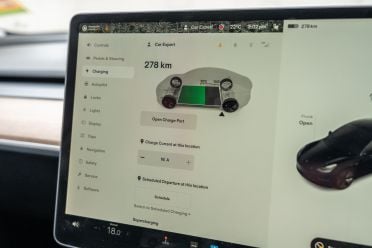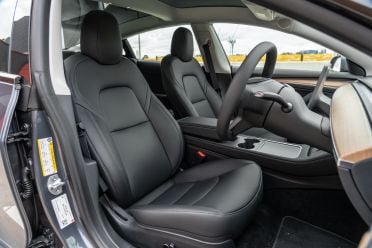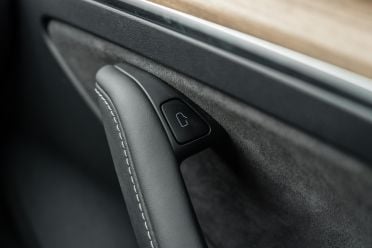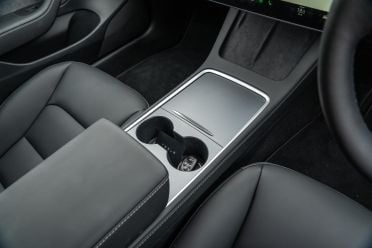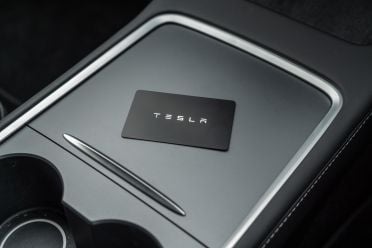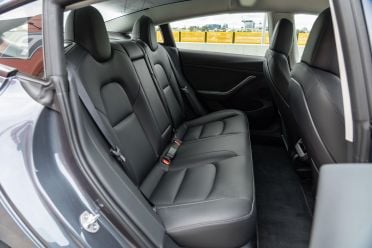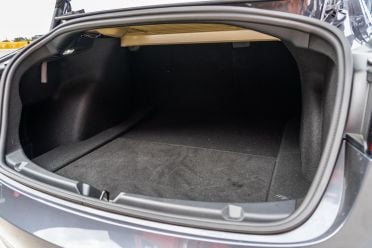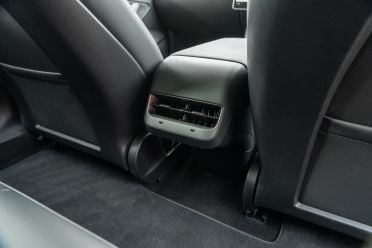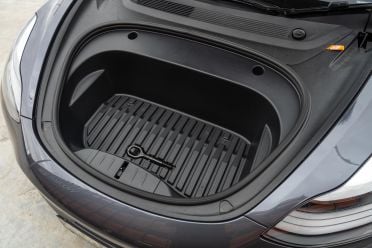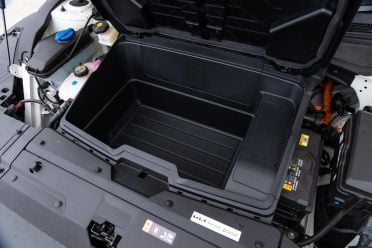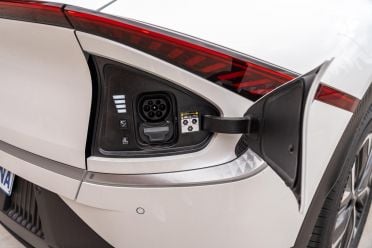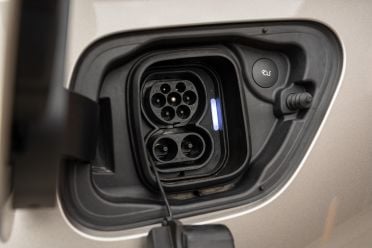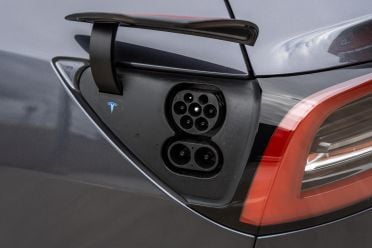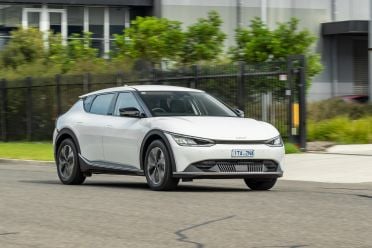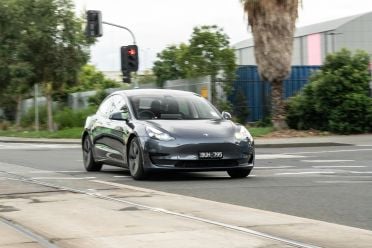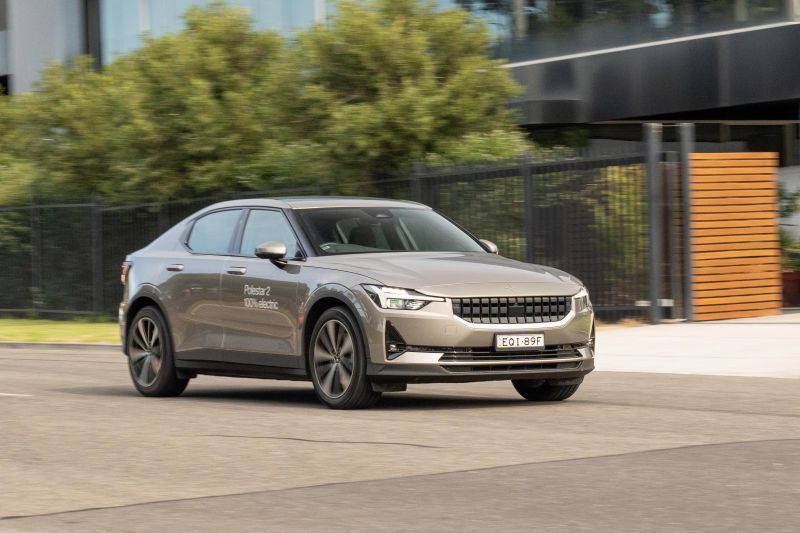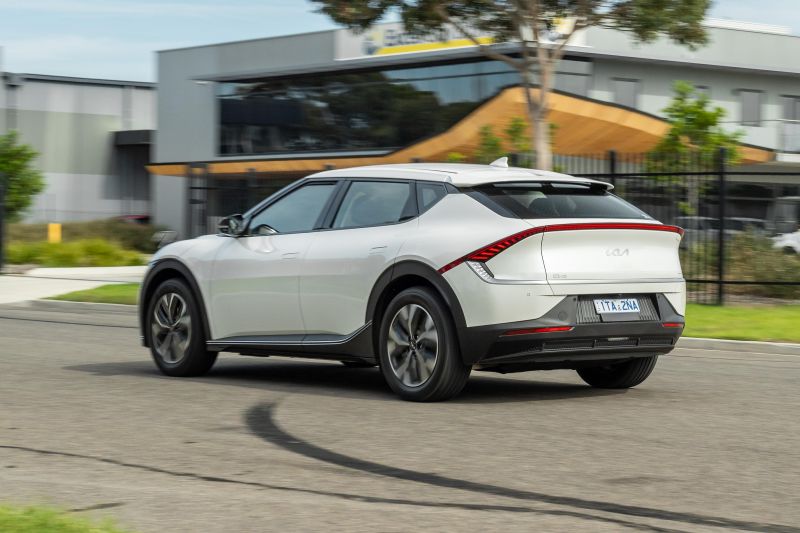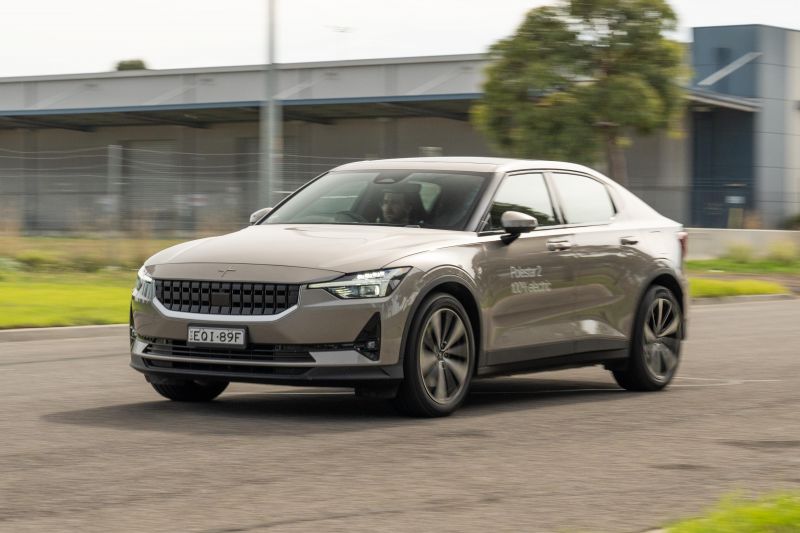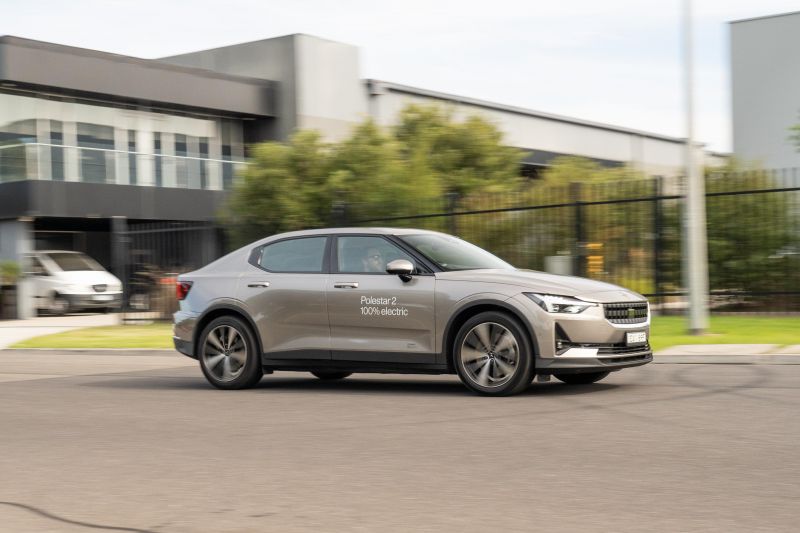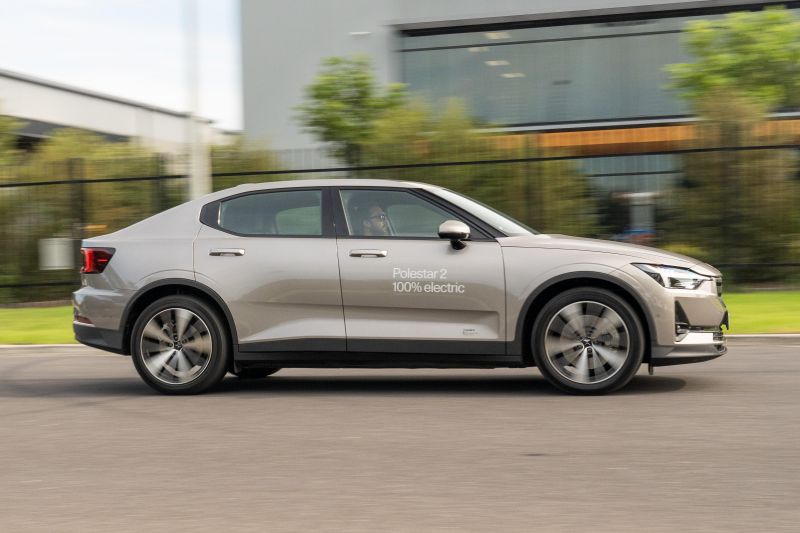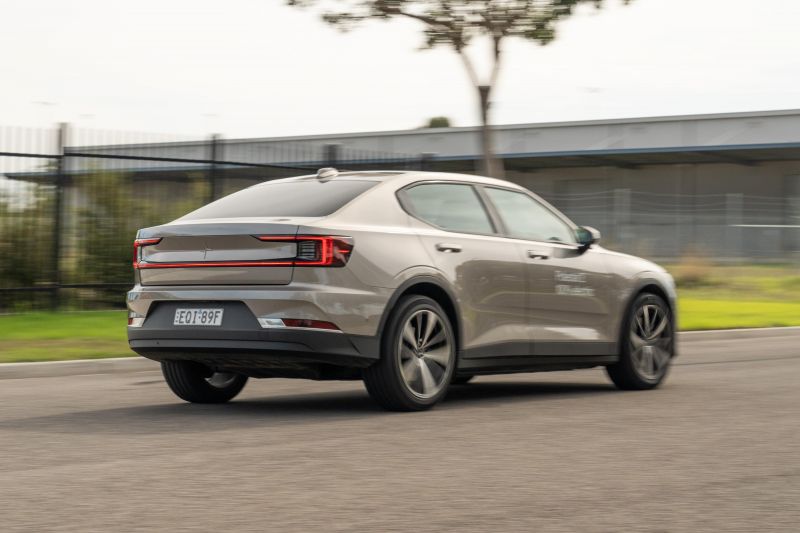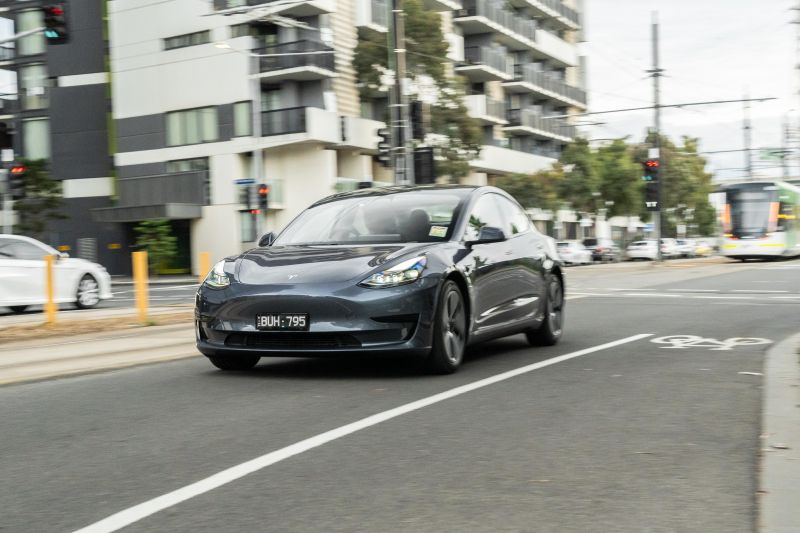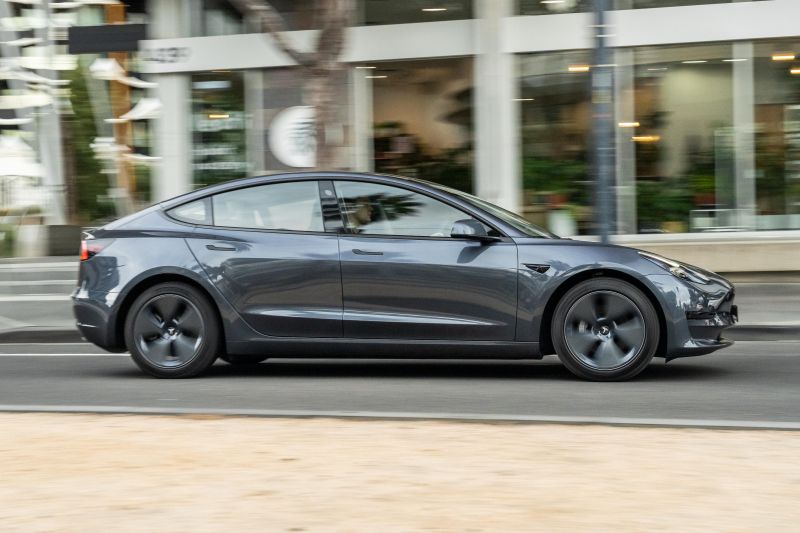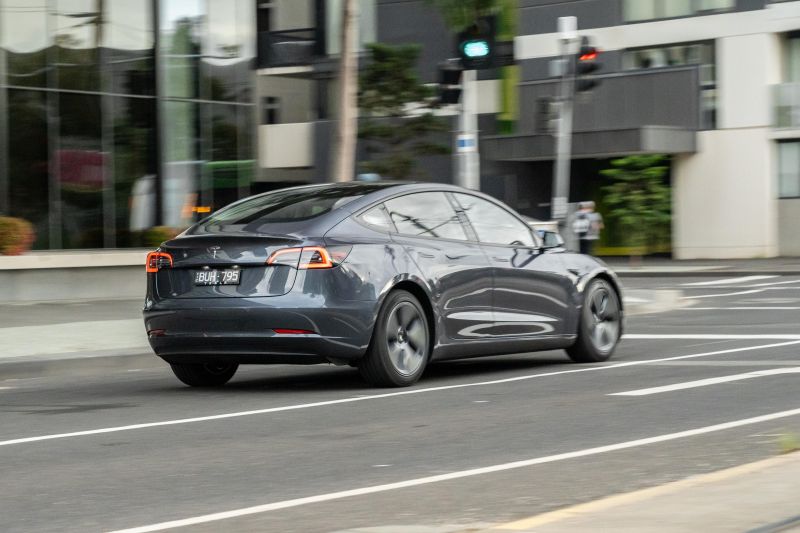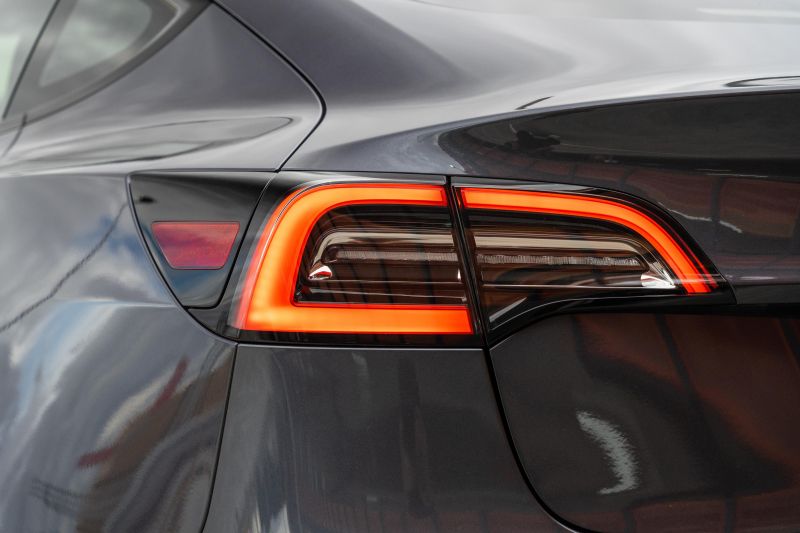You’re looking at three of the most in-demand cars in Australia. All three are essentially sold out at the moment, thanks in part to growing interest in electric vehicles, and in part to limited global supply.
The struggles being faced by Kia have been well documented. It’s getting just 500 examples of the EV6 to sell in Australia during 2022, despite believing it could sell around 3000 based on the number of expressions of interest it’s taken.
Over at Polestar – a venture between Volvo and Geely – the 2 high-riding sedan has launched to a strong reception from critics and customers alike. Polestar has a small pool of pre-configured stock here, but anyone who wants to build their own from scratch will need to wait.
Finally, the Tesla. It’s comfortably the best-selling electric car in Australia, and wait times have blown out to a whopping 12 months.
So, why are we putting them head-to-head? Well, they won’t be sold out forever.
Variants
In the Korean corner is the Kia EV6 Air, the cheapest EV6 money can buy. It looks less aggressive than the GT-Line variant on the outside, and features fewer headline-grabbing trim bits on the inside, but it’s far from short of equipment.
In the Swedish (should that be Chinese?) corner is the mid-range Polestar 2 Long Range Single Motor, with a few choice options packages fitted.
Finally, the all-conquering American Tesla which, like the Polestar, is manufactured in China. The eponymous grade (formerly called Standard Range Plus) is the cheapest Model 3, but even this entry-level Tesla has plenty of range, performance, and standard kit.
How much?
These cars are closely aligned on price. The Kia EV6 Air RWD is priced at $67,990 before on-road costs, and features no options. It’s the most affordable member of the EV6 family, which extends to $82,990 before on-roads for the range-topping EV6 GT-Line AWD.
The Polestar 2 Long Range Single Motor is the mid-range model in the three-strong 2 range, and had a $64,900 before on-roads sticker price… before options. Our tester featured the Pilot Lite Pack ($3400) and the Plus Pack ($6000), both of which we’d be adding.
Equipped as such, the $73,300 before on-road costs sticker price makes the Polestar 2 pictured here $5310 more expensive than its rival. Prices for the updated model arriving later this year are available here, and have climbed.
The Tesla Model 3 is priced at $63,900 before on-road costs. Aside from colours ($1500) and a white interior ($1500), the big option is Tesla’s misleadingly-named Full Self-Driving Capability (FSD) for $10,100. We’ll break down what it brings further down.
What do you get?
Based on its list price, the Kia and Tesla are the best-equipped cars here. That’s down to the options you need to add to the Polestar 2.
We’ve said this before, but it’s poor that Polestar bundles adaptive cruise control and highway steering, a surround-view camera, side parking sensors, blind-spot assist, rear cross-traffic assist, and LED fog lights into a $3400 package.
Although you can pay more for FSD, the Tesla still comes with a proper suite of driver assists as standard, and its high-tech cabin wants for nothing relative to higher-end models.
You can see more about the Polestar package in the Safety section. Our Polestar tester also featured the Plus Pack ($6000). The features it brings are laid out in the lists below.
Equipment common to all three cars includes
- LED headlights
- LED daytime running lights
- LED tail lights
- Rain-sensing wipers
- Satellite navigation
- Wireless phone charger (Plus Pack on Polestar, dual charger on Tesla)
- Keyless entry and start
- Dual-zone climate control
- Auto-dimming rear-view mirror
- Power-folding exterior mirrors
- Power tailgate
Equipment unique to the Kia includes
- 19-inch alloy wheels
- Flush door handles
- Paddle shifter for regenerative braking
- Cloth/leatherette upholstery
- V2L interior power outlet
- Dual curved 12.3-inch displays
- Apple CarPlay/Android Auto (wired)
- USB chargers in front seatbacks
- 12V outlet in luggage area
Equipment unique to the Polestar includes
- 19-inch alloy wheels
- 11.2-inch touchscreen Android Automotive infotainment system
- 13-speaker Harman Kardon sound system (Plus Pack)
- Polestar Digital Key (phone-based locking and unlocking)
- 13-speaker Harman Kardon sound system (Plus Pack)
- WeaveTech vegan upholstery (Plus Pack)
- Fully-electric heated front seats with memory (Plus Pack)
- Heated rear seats (Plus Pack)
- Heated steering wheel (Plus Pack)
- Panoramic roof (Plus Pack)
Equipment unique to the Tesla includes
- 18-inch alloy wheels
- 15-inch touchscreen infotainment system
- 12-way power adjustable front seats
- Heated front seats and outboard rear seats
- Tinted glass roof
Are they safe?
Active safety equipment common to all three includes
- AEB with cyclist/pedestrian detection
- Adaptive cruise control with stop/go (Pilot Lite Pack on Polestar)
- Lane-keep assist
- Blind-spot monitoring (Pilot Lite Pack on Polestar)
- Rear cross-traffic assist (Pilot Lite Pack on Polestar)
- Traffic sign recognition
- Reversing camera
- Front and rear parking sensors
Kia EV6 Air RWD
The Kia EV6 hasn’t been crash tested by Euro NCAP or ANCAP. Kia says it’s planning to have the car crash tested by Euro NCAP in the second quarter of 2022.
It comes standard with a full suite of safety features, led by eight airbags – including a front centre airbag, designed to prevent occupants’ limbs colliding in a side-impact collision.
Active safety equipment unique to the Kia includes:
- Junction assist (brakes to prevent being t-boned pulling out of intersections)
- Multi Collision Braking
- Active lane-centring
Polestar 2 Long Range Single Motor
The Polestar 2 has a five-star ANCAP safety rating based on testing carried out by Euro NCAP in 2021. It scored 92 per cent for adult occupant protection, 87 per cent for child occupant protection, 80 per cent for vulnerable road user protection, and 82 per cent for safety assist.
Like the Kia, it features eight airbags including a front centre inflator.
Active safety equipment unique tio the Polestar includes:
- Oncoming Lane Mitigation (steers the car back into its lane if you veer into the path of an oncoming vehicle)
- Run-Off Road Mitigation (steers the car back onto the road if it detects you’ll veer off it)
- Side parking sensors (Pilot Lite Pack)
- Surround-view camera (Pilot Lite Pack)
- Active lane-centring (Pilot Lite Pack)
Tesla Model 3
The Model 3 has a five-star safety rating from ANCAP.
It scored 96 per cent for adult occupant protection, 87 per cent for child occupant protection, 74 per cent for vulnerable road user protection, and 94 per cent for safety assist.
It features eight airbags.
Unique safety equipment to the Model 3 is limited to the camera-based blind-spot monitor system, which flashes a live feed of your blind-spot on the central screen when the indicators are active.
What are they like inside?
Kia EV6 Air RWD
Regardless of which model you opt for, the EV6 features an interesting interior design and loads of standard equipment. It’s a sporty cabin which shares some of its bits with the Sportage, but has a look and feel of its own.
It’s more conventional than the Polestar behind the wheel, but it’s still thoroughly modern and high-tech.
Unlike the GT-Line models with their fancy “zero gravity” seats, the Air has more conventional units. They’re fine, but they lack the under-thigh support on offer in the Polestar, and are harder to get into a good position due to the range of (manual) adjustment on offer.
It’s a bit lacking in visual excitement compared to a GT-Line or the racy Polestar, and the blank buttons ahead of the cupholders are a constant reminder you bought a base model. The fact you need to press a start button feels a bit old-hat after the arrive-and-drive Polestar, too.
With all of that said, it’s still a nice place to spend time. Even in base guise it’s clear Kia wants the EV6 to feel like a full-blown flagship for its range, as evidenced by the shapes on the centre console and dashboard, and the panoramic dual-screen setup.
Sitting atop the wing-shaped floating dashboard is a beautifully curved, dual-screen infotainment setup. The central touchscreen will be familiar to anyone who’s driven a modern Sorento or Sportage, and comes with a full feature list.
The responses are quick, the graphics are pretty, and it’s not hard to navigate thanks to the row of function buttons sitting below the screen on a slim, matte touchscreen. That display doubles as your climate controls; a clever touch that allowed the designers to keep a clean look without sacrificing functionality.
It’s a shame Kia and Hyundai still aren’t offering wireless smartphone mirroring in their flagship infotainment system, and stands out more in a tech-forward car like the EV6. Then again, the Polestar and the Tesla don’t have CarPlay at all…
Also missing is app connectivity; although Kia is rolling out connected services on all mid-life updates and new cars after the Niro, the EV6 missed the cut.
The wireless phone charging pad under the armrest is handy, and there’s an abundance of USB-A and USB-C ports for both front and rear passengers. With a proper three-pin plug under the rear seats, you’re even able to plug in a laptop.
You’re not going to be short of places to store stuff. One of the benefits of the e-GMP EV platform is the flat floor and absence of a transmission tunnel, which means you’ll get a handbag in the bin between the front seats.
There’s also a spacious underarm bin, two coffee-friendly cupholders, and bottle-shaped cutouts in the doors. It’s the polar opposite to its comparatively storage-starved Polestar. Rear seat space is a bit of a mixed bag. Legroom is excellent, and headroom is better than you’d expect of a car with a sloping, style-focused roofline.
It’s comfortably the more spacious of the three cars back there, with a usable middle seat and wider-opening doors making it a more natural family hauler.
At first glance it looks like there are no air vents or USB chargers, because the back of the central island is empty. Look further though, and you’ll find USB-C plugs on the side of the front seats and air vents in the pillars ahead of the doors.
Boot space is good, but not great given the car’s size. It has the Polestar covered, though. You get 490 litres of space in the boot of the Air, although it’s also a shame the e-GMP cars we’ve seen so far lack the big front boot you get in a Tesla.
Even the rear-wheel drive EV6 has just 50L of space under the bonnet, which is enough for your cables but not much else.
Polestar 2 Long Range Single Motor
Polestar hasn’t chased a light, airy feeling behind the wheel. Instead, the combination of a rising central tunnel and pinched, almost muscle car-like windowline, along with a surprisingly low seating position, makes it feel like the 2 is wrapped around you.
The seats are excellent. They’re pretty to look at, and offer more padding and support than their slim shape would suggest, although the vegan trim on our tester feels a bit too wetsuit-ish for my liking.
Headroom is excellent up front despite the panoramic glass roof, and the low-ish driving position hasn’t come at the cost of forward visibility. Little drivers won’t have trouble seeing the front corners of the car, but the sloping roofline and pinched glasshouse means there’s a pretty hefty over-the-shoulder blind spot.
At the centre of the cabin is an 11.2-inch touchscreen running Android Automotive software from Google. Unlike Android Auto, which is driven by a connected phone and runs over the top of a carmaker’s in-house software, this system is Google from the ground up.
Using the system is like using a giant Android tablet, albeit one that controls your air-conditioning and navigation instead of Facebook and Candy Crush.
It’s a big step forward from the pretty (but clunky) Sensus system that’s featured in Volvo products since the current XC90 launched in 2014, and doesn’t leave you wishing for old-fashioned buttons like some touch-only setups.
Hey Google voice commands put the system streets ahead of the Kia’s and Tesla’s setups. The 4G signal issues that popped up during our first drive appear to have been fixed, too.
Google Maps are still the industry best, and having Spotify built natively into the car is great. Also great is over-the-air update capability, which should keep the system fresh as driver demands evolve.
The driver is faced with a simple, clean display that shows your speed, range, power usage, and mapping. You’re not bombarded with battery capacity readouts and range predictions, which (once you’ve realised the Polestar 2 is good for close to 500km on a charge) makes it easier to just drive rather than worrying about your battery level.
There are a few oversights up front. For one, storage is frustratingly limited. There’s a small bin under the armrest, but it’s not big enough for sunglasses or snacks, and the rising transmission tunnel doesn’t have space for bags beneath it.
The second cupholder is hidden beneath the central armrest, where I store my garage keys and chewing gum, so if you want to carry a water bottle and a coffee cup you need to ditch your bits and pieces.
One benefit of going electric is the freedom afforded to interior designers by flat-floored platforms, but the 2 is built on a converted internal-combustion chassis. As a result, it feels a bit compromised at times.
Although the recycled, leather-free interior materials look modern and cool, there are some sharp edges and scratchy spots that suggest the 2 has been built to a price.
Finally, you don’t get Apple CarPlay yet – Polestar says it’s coming – and wireless charging is an option.
It’s a mixed bag in the second row. Rear legroom is accomodating enough for average-sized adults, but it’s a bit tight back there behind taller drivers. Headroom is better than expected given the panoramic glass roof and there’s space for kids or tall-ish teenagers, but adults will feel a bit cramped.
The middle seat is a total write-off, with a narrow cushion and no foot room thanks to the internal-combustion legacy hump on the floor.
The EV6 with its Hyundai Palisade-aping wheelbase blows it away for rear-seat usability, even before you consider the fact it has a three-pin plug to charge a laptop.
With a slim windowline and sharply-raked roofline, it feels a bit dark and claustrophobic back there, and the rear door opening is pretty tight. On the plus side, there are air vents and two USB-C ports back there. You also get heating with the Plus Pack.
Space beneath the powered hatchback is decent, and the sloping roofline eats into space a similar amount as the tailgate on the Kia. The load bay is flat and broad, and there’s a decent cubby beneath it for charge cables or valuables.
You only get 30L of space under the bonnet, which is another nod to its internal-combustion origins.
The rear seats fold 60/40, and there’s a ski port in the middle for longer items. Boot space with the seats in place is 405 litres.
Tesla Model 3
The Model 3 is like nothing else on the road. Even the Polestar feels a bit old-fashioned after the Tesla and its pared-back cockpit.
The short dash and ultra-low bonnet, not to mention the fact there’s no instrument binnacle in front of you, mean the view out the windscreen is panoramic relative to its rivals. It’s the opposite of the Polestar with its high window line and chopped roof, even if both cars feature very similar glass sunroofs.
The lack of any buttons or controls, even for the air vents, is jarring at first.
Everything in the Model 3 is managed through that monstrous central touchscreen, which looks like an iPad tacked onto the dashboard. It’s more prominent than in the Polestar and Kia, the designers behind which have gone to more effort to integrate their infotainment systems into the dashboard.
With a basic voice control system and no buttons, everything – mirrors and steering wheel included – is adjusted through a sub-menu. Even the air vents are touch-controlled.
For the most part, the display is easy to use. Most of the things you need are shown prominently on the home page, so you don’t need to go far to change radio station, adjust the temperature, or set a destination with the navigation.
The way the tiles slide around the screen and layer themselves is every bit as slick as you’d expect of a car aimed at early adopters and tech-savvy entrepreneurs, although the design is busier than the uber-modern look of the Google system in the Polestar.
A recent update has also made the system fiddlier to use, thanks to a series of small icons running along the base of the display.
Given the lack of a driver display, the speedometer is a bit smaller than it really should be, and the flickering of the car visualising the world gets distracting at times. Even so, the only real issue with the Model 3 is the lack of CarPlay and Android Auto for owners who want to access their messages on the move.
Gripes? The push-button door handles need explaining to passengers, and the indicator stalk requires a firmer flick than you’d expect.
The seats are supremely comfortable up front, and the driving position is nigh on perfect. It’s easier to tailor than the seating position in the Kia, although the Polestar’s pews are slightly better bolstered.
With no transmission in the central tunnel there’s acres of storage – just as much as you get in the Kia, with more options to cover or hide valuable – and the dual wireless charger is a nice touch.
Rear seat space is better than in the Polestar, but down on what’s on offer in the EV6. The high floor and low bench mean longer-legged passengers end up with their knees pressed higher than is ideal, while headroom is good but not great.
There’s a fold-down armrest with cupholders between the seats, air vents, and USB-C charge ports on offer back there.
Boot space is 425L with the rear seats in place, although the front boot expands that to 649L. The Tesla is the only car here with a proper space up front, which is very handy.
Rather than a liftback, Tesla has made the Model 3 a sedan. That means it’s harder to reach the deepest, darkest corners of the boot.
| Kia | Polestar | Tesla | |
|---|---|---|---|
| Length | 4680mm | 4606mm | 4694mm |
| Width | 1880mm | 1891mm | 1933mm |
| Height | 1550mm | 1477mm | 1443mm |
| Wheelbase | 2990mm | 2735mm | 2875mm |
| Boot space | 490L (50L frunk) | 405L (30L frunk) | 425L (224L frunk) |
| Tare weight | 2000kg | 2008kg | 1760kg |
What’s under the bonnet?
Kia EV6 Air RWD
All Kia EV6 models in Australia feature a 77.4kWh lithium-ion battery pack, rather than the 58kWh battery that’s standard on lower-end cars overseas.
Rear-wheel drive models like our Air are powered by a 168kW and 350Nm motor mounted on the rear axle, good for a 7.3-second sprint to 100km/h.
Claimed range in the base EV6 Air is 528km. Thanks to the 800V technology baked into the e-GMP platform, the EV6 can fast charge at up to 350kW.
Kia says it’s able to charge from 10 to 80 per cent in as little as 18 minutes when you’re plugged into an ultra-rapid DC public charger.
Polestar 2 Long Range Single Motor
The mid-range Long Range Single Motor features a 78kWh battery, rather than the 69kWh battery standard on the entry-level model.
With outputs of 170kW and 330Nm from the front-mounted electric motor, the 100km/h sprint takes a claimed 7.4 seconds.
Claimed range in the mid-range Polestar 2 Long Range Single Motor is 540km.
Polestar says you can charge at up to 150kW on a public DC fast charger, good for a 10-80 per cent boost in 35 minutes.
It’s worth noting peak charge speed is only available up until around 20 per cent, before it gradually tapers off.
Tesla Model 3
The entry-level Model 3 features a 62.3kWh lithium iron phosphate battery pack, rather than the 82kWh pack used in the Long Range and Performance.
With 239kW and 420Nm from its single rear motor, the 100km/h sprint takes a claimed 6.1 seconds.
Claimed range in the base Model 3 is 491km.
Tesla says you can charge at up to 170kW on a public DC fast charger, such as the Superchargers at its proprietary charge stations.
| Kia | Polestar | Tesla | |
|---|---|---|---|
| Battery storage | 77.4kWh | 78kWh | 62.3kWh |
| Battery chemistry | Lithium-ion | Lithium-ion | Lithium iron phosphate |
| Motor | Rear | Front | Rear |
| Power | 168kW | 170kW | 239kW |
| Torque | 350Nm | 330Nm | 420Nm |
| Claimed range | 528km | 540km | 491km |
| 0-100km/h | 7.3 seconds | 7.4 seconds | 6.1 seconds |
| Peak charge speed | 350kW | 150kW | 170kW |
How do they drive?
Kia EV6 Air RWD
Polestar might be pitching itself as the sporty electric car brand, but the EV6 is sportier than you might expect of a 2.1-tonne car.
Australia’s suspension tune sits somewhere between the ultra-soft Korean and uber-firm European setups, and the car rides on frequency selective dampers designed to offer a relaxed ride when you’re cruising, but without sacrificing that last degree of body control when the car is tipped into a corner.
With its less sexy wheels and chubbier tyres, the EV6 Air is a better-riding car than the Polestar which, even without the sporty Ohlins dampers fitted to the Dual Motor models with the Performance Pack, has tighter body control and feels sharper over bumps.
It’s also more comfortable than the Tesla, which sits in the middle.
That more relaxed character permeates through the whole driving experience. The steering in the Kia is a bit lighter and slower, and the throttle pedal takes a longer press when you want to dip into the meat of the motor’s torque.
The Polestar and Kia have nearly identical zero to 100km/h sprint times, but the way the Kia delivers its performance means it doesn’t feel as fast as the Polestar. That’s fine, by the way, because it’s not trying to be a sports car.
Unlike the set-and-forget Polestar and Tesla, the Kia encourages you to fiddle with its regenerative braking using paddles behind the steering wheel. In its most aggressive iPedal mode you don’t need to touch the brake pedal at all, and the system engages smoothly and smartly.
It’s a shame you need to turn it on every single time you get in the car. Like the start button, it’s an example of carryover thinking from internal-combustion vehicles holding the EV6 back from being the electric car it could be.
With all of that said, the paddles do come in handy on winding roads, where it can be difficult to carry slow the car or carry momentum like you would in a petrol or diesel using heavy regenerative braking.
The combination of a more relaxed ride, longer wheelbase, and impressive noise suppression make the EV6 a better highway cruiser than the Polestar and Tesla.
It has a languid, long-legged feel at 100km/h, with just a hint of roar from the tyres sneaking into the cabin.
I spent more than eight hours behind the wheel of an EV6 GT-Line over Easter and came away thoroughly impressed; the more comfortable Air is an even better road trip companion.
Hyundai and Kia’s adaptive cruise control does a good job maintaining its speed down hills, and the lane-keep steers you confidently back between the white lines if you start to drift. The lane-centring, which more actively takes control of the car’s position, is far too hands-on though.
Polestar 2 Long Range Single Motor
With similar outputs and similar performance claims, the Polestar and Kia are closely matched on paper.
In practice the 2 feels meaningfully sportier than the EV6, which is what Polestar was going for.
Although it doesn’t have the (even firmer) dampers from the Performance Pack-equipped Dual Motor, the Long Range has a tauter suspension setup than the Kia and the Tesla.
It’s pretty well set up – for the most part it’s tightly controlled instead of harsh – but potholes or speed bumps make more of an impact in the cabin, and it’s a bit busier over the sort of small imperfections common around Melbourne and Sydney.
Coupled with fairly heavy, direct steering, the sporty suspension tune makes the Polestar feel almost like an overgrown hot hatch. It hides its two-tonne mass well and offers a solid shove in your back when you lean on the accelerator, and in wet weather will light up the front tyres if you get greedy with the accelerator.
Although you can flick through different levels of brake regeneration, the settings are buried in a sub-menu. It’s likely most owners will just set and forget, and leave the system in its most aggressive mode.
It kicks in faster and slows the car more aggressively than even the iPedal in the EV6 or the default setting in the Tesla Model 3, which takes some getting used to. Once dialled in, it’s possible to commute without touching the brake pedal.
As is common in European cars there’s a bit of tyre roar on coarse chip highways, although it’s nothing that can’t be solved by turning up the stereo. The Polestar 2 can’t match the Kia for refinement, but isn’t all that far from aligning with the Tesla.
The benefit of Polestar’s link to Volvo is clear when you activate the adaptive cruise control and steering assist.
It’s one of the smoothest, smartest radar cruise control systems out there, and the active steering does a great job keeping you between the white lines.
It’s a better system than that of the Kia, and feels less flighty than the Autosteer Beta in the Tesla. The fact it’s an option is laughable in what’s meant to be a high-tech car from an EV-only startup, though.
Tesla Model 3
It’s clear Tesla has plenty of experience developing electric powertrains. The Model 3 is the most polished car to drive of the three.
Like the Polestar, it doesn’t have a start button. You just put your foot on the brake and flick the Mercedes-Benz-style stalk behind the steering wheel into drive to get rolling.
Even though this is the base model, the Model 3 is comfortably the fastest car on test here. Dip into the accelerator’s travel and it packs a hot-hatch-worrying punch, squeezing you back in your seat more determinedly than either of its rivals.
There’s more to life than going quickly in a straight line, but being able to smoke people from the lights in what looks like a pretty unassuming family sedan is endlessly satisfying.
When it comes to character, the Model 3 slots in somewhere between the Polestar and the Kia. The small steering wheel and direct steering make it feel sporty and purposeful, and mean you can dart around the city without ever removing your hands from nine-and-three.
Even on its 18-inch alloy wheels the ride in the base Model 3 is reasonably firm, but it doesn’t go quite as far as the Polestar. That means it’s a bit more relaxed over speed bumps, and doesn’t feel as jiggly over pimply inner-city streets.
It can’t match the long-legged Kia for overall comfort, but it strikes an impressive balance between ride and handling.
The regenerative braking in the Tesla is the best of the three cars. It’s not alone in offering proper one-pedal driving in traffic, but you don’t need to fiddle with paddles like you do in the Kia, and it engages more smoothly than the system in the Polestar.
The way the regen tapers off as you approach a stop to smooth things out sets it apart from the rest.
The Model 3 can’t match the Kia for refinement at highway speeds. It’s a bit noisier, and the ride isn’t as relaxed on less-than-perfect Australian roads – although it still has the Polestar covered for high-speed refinement.
Then there’s Autopilot driver assistance system. Adaptive cruise and autosteer are standard across the Model 3 range, but the $10,100 (!!) Full Self-Driving package brings auto lane-change functionality, automatic parking, and Summon functionality.
The Autopilot name suggests this should be the most capable system of the three, but in reality the autosteer dropped out more frequently than either the Polestar or Kia’s lane-centring assists, and the adaptive cruise wasn’t appreciably smoother.
Cost of ownership
Kia EV6
The EV6 is covered by a seven-year, unlimited-kilometre warranty, with high-voltage components such as the battery, e-motors and on-board charger warrantied for seven years or 150,000 kilometres.
Kia offers three prepaid service plans. The three-year plan is priced at $594, the five-year plan will set you back $1089, and the seven-year plan is $1584.
Polestar 2
The Polestar 2 is covered by a five-year, unlimited-kilometre warranty with an eight-year, 160,000km battery warranty.
All models come with free servicing and roadside assistance for five years.
Tesla Model 3
The Tesla Model 3 is backed by a four-year, 80,000km warranty in Australia, with the battery covered by an eight-year or 160,000km guarantee it won’t drop below 70 per cent of its original capacity.
Tesla recommends having the air-conditioning filters changed every two years, and checking the tyre tread, balance, and rotation every 20,000km.
The Model 3 will need to have brake fluid checked every two years, and the pads and discs lubricated every 12 months in colder climates.
CarExpert’s Pick
These are all very interesting, enjoyable electric cars.
Although it’s built on a legacy internal-combustion platform, the Polestar 2 shows the benefits of building your brand from a clean slate.
It offers the best of both worlds, blending a slick startup look with the feeling of quality and solidity you’d expect of a Volvo. Of the three cars on test here it’s the most fun to drive, too.
However, in the negative column some safety equipment is optional, and its interior space is compromised alongside the other two.
The Kia EV6 offers meaningfully more space from a similar footprint inside, a more up-to-date fast-charging experience, and a stronger list of standard inclusions for the price.
It’s an impressive first ground-up electric car. Now we just need Kia to bring more Down Under.
Finally, the Model 3. It’s the best-selling EV in Australia for good reason.
Although the Polestar and Kia are both enticing alternatives, neither is quite as all-round talented as the Tesla.
It’s the best overall to drive, combines some of the more successful elements from both the Kia and Polestar inside, and undercuts both of them on price. Not to mention access to the Supercharger public charging network.
More competition is coming, but for now it remains the king.
MORE: Everything Tesla Model 3
MORE: Everything Kia EV6
MORE: Everything Polestar 2

